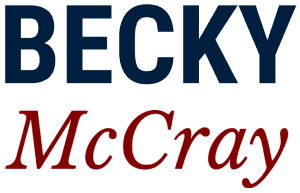Why I don’t recommend resource mapping
Resource maps come up occasionally as a recommended project for all small towns. It’s one of those stock answers.
It seems like making a resource map would be progress because you’re doing something concrete, creating a resource that will last for a long time and help a lot of people. But it’s a trap.
Map isn’t even the right word for it. You can’t map what won’t stay put. These resources are people not places.
My friend Laura Girty has held several positions in rural economic development in my region. She worked with Department of Commerce, at a rural lender, and for a local economic development group. No matter what title she holds today, she’s the one I’ll call when I need a local resource. Don’t you know people like this in your area?
Especially in rural communities, the quality of any specific resource depends on the quality of the person currently serving in that role. What makes a specific person valuable is their extensive network or their practical knowledge. When they leave that role, they take their excellence (or lack thereof) with them. The next person won’t have the same ability to help. So your resource map is out of date as soon as one person changes jobs.
It doesn’t matter where Laura is on the map, because Laura is a great resource anywhere.
Now, what do you do instead of drawing a map? You create a living network by getting people into the same room, and often.
Your goal is for as many people as possible to know who to talk to for any specific problem.
Need a fancy strategic plan name for it? You can call it joint staffing or cross-silo peer meetings or local network building.
Over and over I’ve heard how well this works.
- There’s a county in Ontario that holds weekly cross-department meetings of all the people involved in planning and development. As they present each project, they talk through any potential surprises or hurdles.
- There’s a state government holding networking sessions across silos. One staffer explained it made all the difference to actually know counterparts by name. Rather than let an issue fester, he’s much more likely to make a call and work it out early.
- There’s a county in Oklahoma where different workforce agencies sit down for joint staffing. They work together at finding the right resources for each client, rather than expecting the client to work it out for themselves, bouncing from office to office.
- There’s a county in Oregon where all the chambers of commerce come together monthly to share what’s going on and how they can connect.
Rather than looking on a static map for a name or title, people have actual relationships. They can pick up the phone or shoot off an email to someone they know will have the current info.
The constant random interactions create serendipity, positive collisions of ideas and more possibilities. You can’t design for it. You can’t force it to happen. You can only create the places and the moments when it could happen. And you can’t do that by drawing a resource map.
Keep shaping the future of your town,
Becky
PS – Did you catch my guest post on the Main Street America blog? Share Space to Spur Startups
